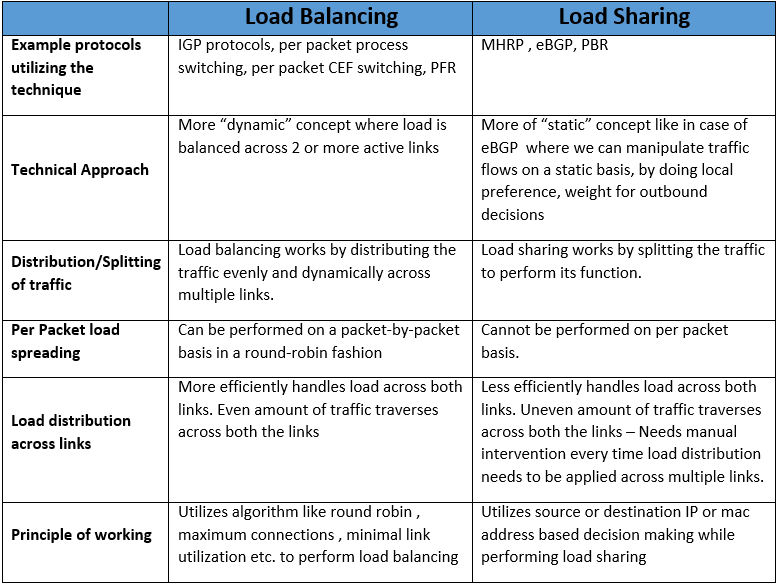RIP 、EIGRP、OSPF 差別小筆記
|
RIPv2
|
EIGRP
|
OSPF
|
DV / LS ?
|
distance vector
|
distance vector
|
link state
|
成本
|
Hops (最大15)
|
BW + Delay
|
Cost
(REF/BW)
|
Auto Summary
|
V
|
V
|
X
|
Manual Summary
|
Any router
|
Any router
|
ABR(ASBR)
|
防止路由迴圈
|
X
|
V
|
V
|
CIDR
|
Classful only
|
Classful [wildcard]
|
Wildcard only
|
Neighbor
|
X
|
V
|
V
|
演算法
|
|
DUAL
|
Dijkstra's SPF
|
更詳細可以參考:
https://learningnetwork.cisco.com/thread/63810
EIGRP
1. Hybrid protocol –
Distance vector (first time) Link state (updates)
2. Summarization possible on all the routers.
3. Easy to configure (No area configs) & can separate
routes wrt to AS numbers
4. Not much processor oriented as the metric from the neighbor is believed and also feasible successor in place
5. No dependency… like underlying area 0
6. Add as many routers u want, with proper planning
and summarization.
7. Easy to design and redesign
8. Only 2 route types (Internal & external)
9. Convergence is faster as the hello:dead = 5:15 & also
because of the successor & feasible successor.
10. Supports only md5 authentication
11. Hello/Dead shud not match, helps while making
changes
12. Stuck in Active scenario (can be addressed with
summarization / stub / disabling active-timers)
13. In modern DMVPN designs, EIGRP has managed to
move past 3500 peers
14. Equal cost load-balancing is possible ! (variance)
15. traffic-share balanced: traffic load balancing
according to the cost of the available links.
OSPF
1. Purely a Link state protocol.
2. Summarization possible on ABR & ASBR only.
3. A bit complex to design wrt to areas, as all the OSPF
routes gets traverse across OSPF domain.
4. Consumes more resources of the device to run SPF
every time a change happens in network.
5. Must have to rely on area 0 to communicate
interarea.
6. Adding routers in an area may increase the size of
LSBD
7. May be easy to desing, but for redesigning and
adding areas, virtual link is required.
8. 11 types of routes (LSAs)
9. Conversion time is higher than EIGRP,
hello:dead=10:40
10. Supports clear text & md5 authentication
11. Hello/dead timers shud be the same, bit difficult to
make the changes
12. No Stuck in active.
13. Equal cost load-balancing is not possible !


